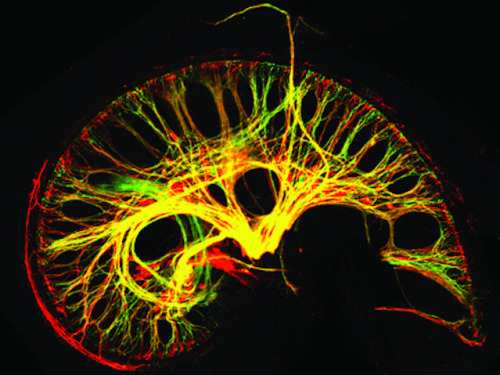
Sound Maps
We navigate the world around us by creating maps of the things we see, smell, hear and touch. These ‘maps’ are a collection of cells organised topographically in the brain areas that process sensory cues from our environment. For sounds, cells that respond to a specific frequency are clustered next to cells for similar frequencies. To better understand how these maps are formed, a team of scientists genetically manipulated the auditory neurons of mice. They found that mouse embryos lacking a certain transcription factor didn’t have topographical maps in the cochlea (shown in this image) or inferior colliculus, two of the first sensory organs that relay auditory signals from the ear to the brain. This study presents some of the first evidence that there is a limit to how ‘plastic’ sensory pathways are, and that we rely on molecular cues in early development to create topographical maps of our environment.
Written by Gaëlle Coullon
- Image from work by Iva Macova & Kateryna Pysanenko, and colleagues, published on the cover of Journal of Neuroscience
- Institute of Biotechnology CAS, Vestec, Czechia
- Image reproduced with permission from the Journal of Neuroscience
- Research published in Journal of Neuroscience, February 2019
You can also follow BPoD on Instagram, Twitter and Facebook
Archive link




Комментариев нет:
Отправить комментарий